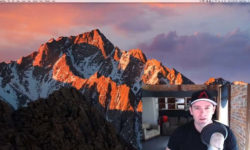Creation of Photo-Realistic 3D Images (Spanish, Multisub)
Release date:2022
Author:Ro Bot
Skill level:Beginner
Language:Spanish
Exercise files:Yes
Learn to replicate the lighting, textures and colour of real life in 3D scenes
Robot -producer and artist VFX who has worked in advertising and more recently for productions such as The Walking Dead , Club de Cuervos or Heroes Reborn – has always used light as a volumetric element that brings realism to your 3D scenes.
In this course, he will teach you to work photorealism from a less technical and more functional approach, generating credible images from CGI renderings that will allow you to imitate reality transforming it at your whim.
About this course
You will start knowing the fundamental concepts that will help you create incredible photorealistic images and you will see the relationship that exists between the render and the photography.
You will discover two different rendering engines and Robot will explain the similarities and differences between their interfaces and everything you can do with each, so you can choose the ideal for each project.
Then, you will get into your project and you will see the workflow that Robot usually uses to create a base lighting scheme, both for interiors and exteriors.
You will create shaders, develop materials and textures and pay special attention to areas that, despite being especially complicated, will make a difference in the final image.
Once you have your image practically finished, you will go to the color grading process, which will help you to give a more realistic look to your render.
What is this course’s project?
You will develop a scheme of lighting, textures and color applied to a scene full of nuances, seeking the imitation of reality.
Who is it for?
Designers, CGI artists, VFX and in general anyone interested in looking for a realistic effect in their renders.
What you need
It is advisable to have previous knowledge of 3D design and render engines. You will also need a computer in which you must have installed a program for 3D design. Robot uses 3DMax and Corona and FStorm as rendering engines, but you can use those with which you feel most comfortable.





 Channel
Channel






Can you please make this course available
Ilya Nodia – Advertising photography